The Motorola Rizr is the Sharper Image of the smartphone world
It's there to turn heads, not be practical.
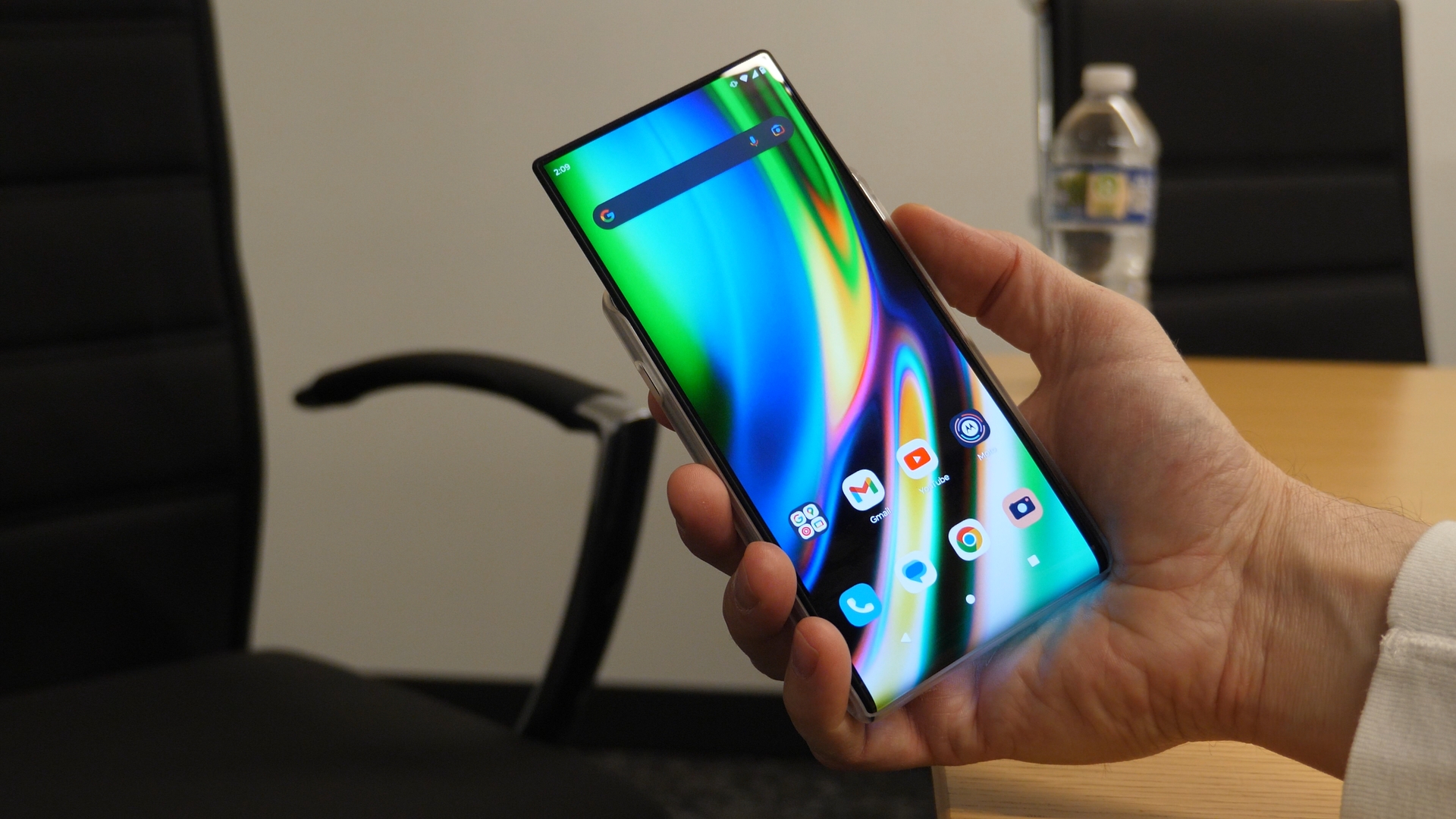
I recently had the pleasure of visiting Motorola's HQ in Chicago and, with that, the opportunity to see all sorts of things I can't talk about yet. But, with that in mind, there is one thing I can discuss: The Motorola Rizr.
As I walked into the conference room where Motorola engineers were showing the phone off, my jaw quite literally dropped. It's a feeling I haven't had since I saw the first folding phone and, before that, probably the time I opened the box of the original Galaxy Note.
I knew what I was going to see before I went into the room and, yet, it still blew me away like it was something I'd never heard of before. But Motorola was very clear that this was still a concept device. It's not ready for mass production by any means and the company likely isn't 100% sure that it would survive the everyday consumer — my words, not theirs — so what's the point of this kind of device?
To turn heads, of course. As if the best foldable phones weren't enough for that, right?
A quick tour
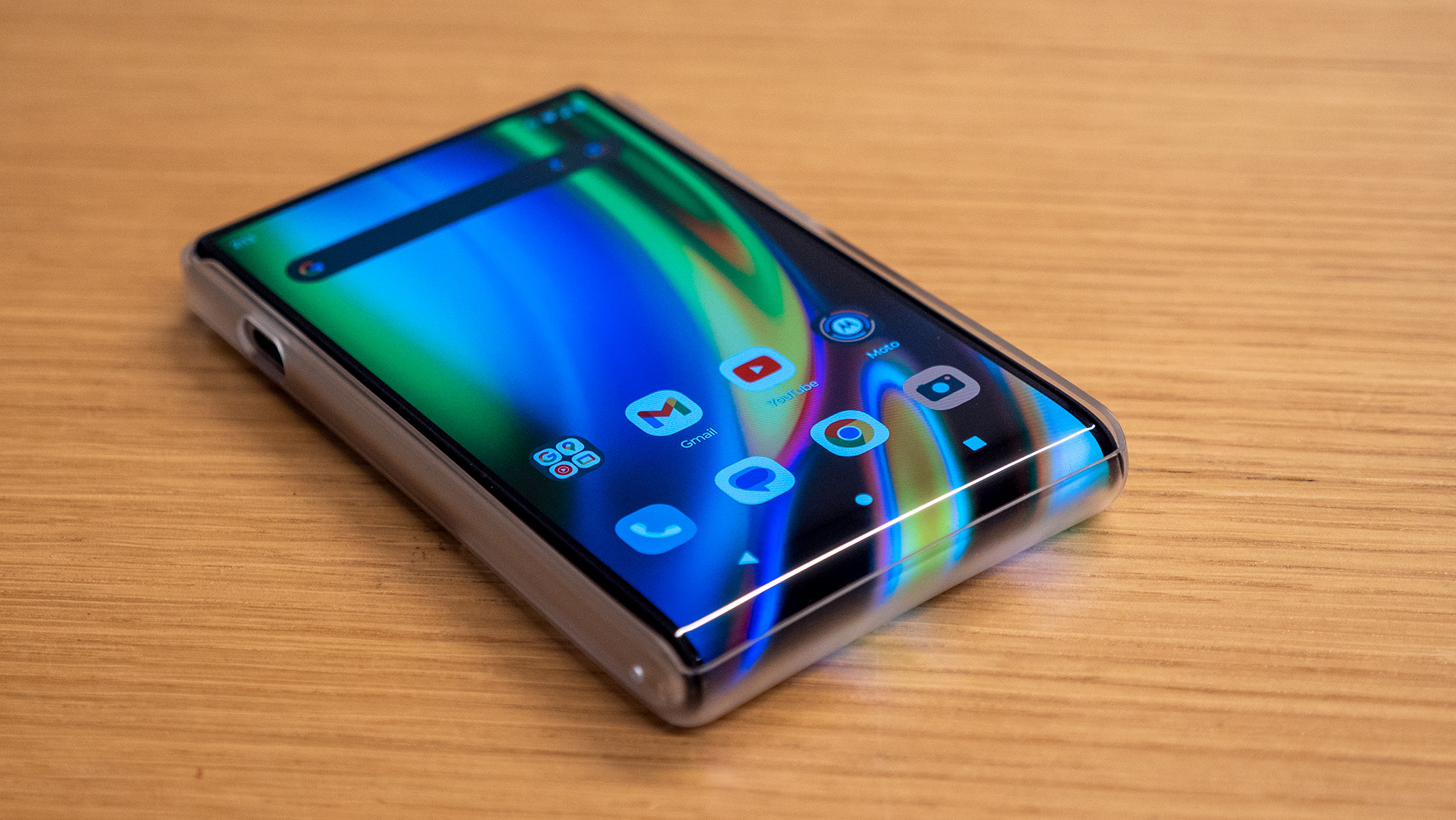
What, exactly, makes the Rizr such an interesting phone? Both conceptually and physically, the device is incredibly unique, and, with that, comes a period of learning. It's only marginally more complicated to learn than a folding phone but its design brings forth the same series of advantages that phones like the Galaxy Z Flip 4 do.
In its compact state, the Rizr is roughly 2/3 the height of a normal smartphone. It's extremely easy to use it with a single hand because the screen is short enough for a thumb to reach every point.
That, alone, is a huge advantage over any smartphone on the market. It also doesn't carry the disadvantages a flip phone's cover screen does — it's not tiny, so you can actually do stuff on it without the experience feeling awkward or distilled.
Be an expert in 5 minutes
Get the latest news from Android Central, your trusted companion in the world of Android
But it only takes a quick double-tap on the power button to get the full experience.
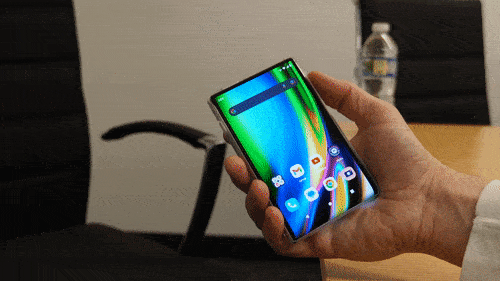
Once the screen rises up, the phone looks and feels more like a normal slab phone with one big exception: the extended portion up top is razor-thin.
If you're the owner of an LG OLED TV — or have just seen one in the past — you'll be familiar with this type of design. OLED panels are miraculously thin and, thanks to the flexible plastic this one is adhered to, the Rizr is no different.
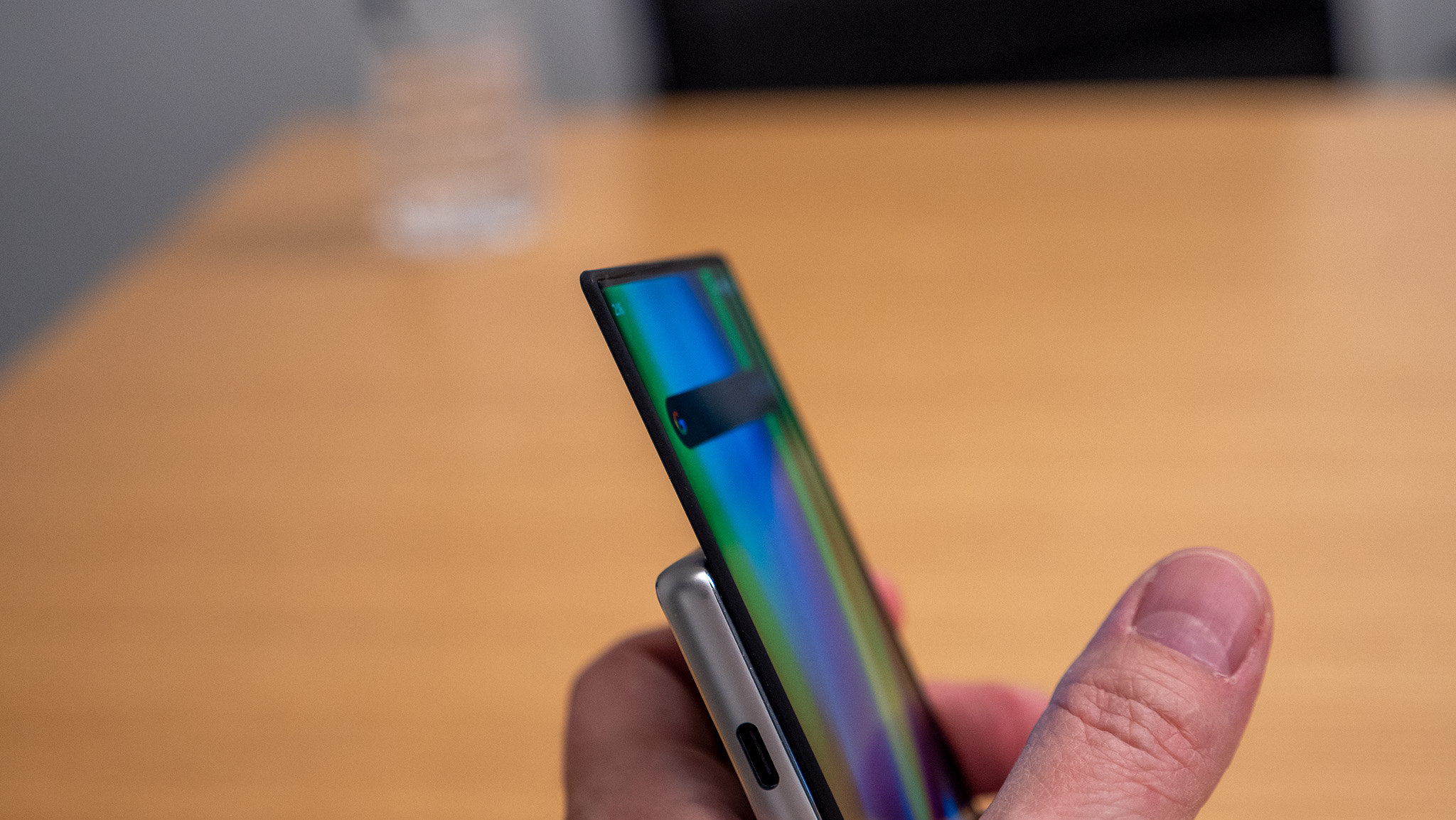
When I asked about what would happen if someone were to drop the phone in its extended state, I was met with a sort of non-answer. "Would you expect it to?" was the most I could muster from this session, although, I imagine future hands-on events with the Rizr might result in a clearer answer.
The phone was protected by a clear plastic case — which you might have noticed in the image at the top of this section — and can be easily removed. The case adds a layer of shock protection to the sides and even protects the rounded bottom of the phone, keeping that precious display from being the first thing to come in contact with the ground if someone were to drop it.
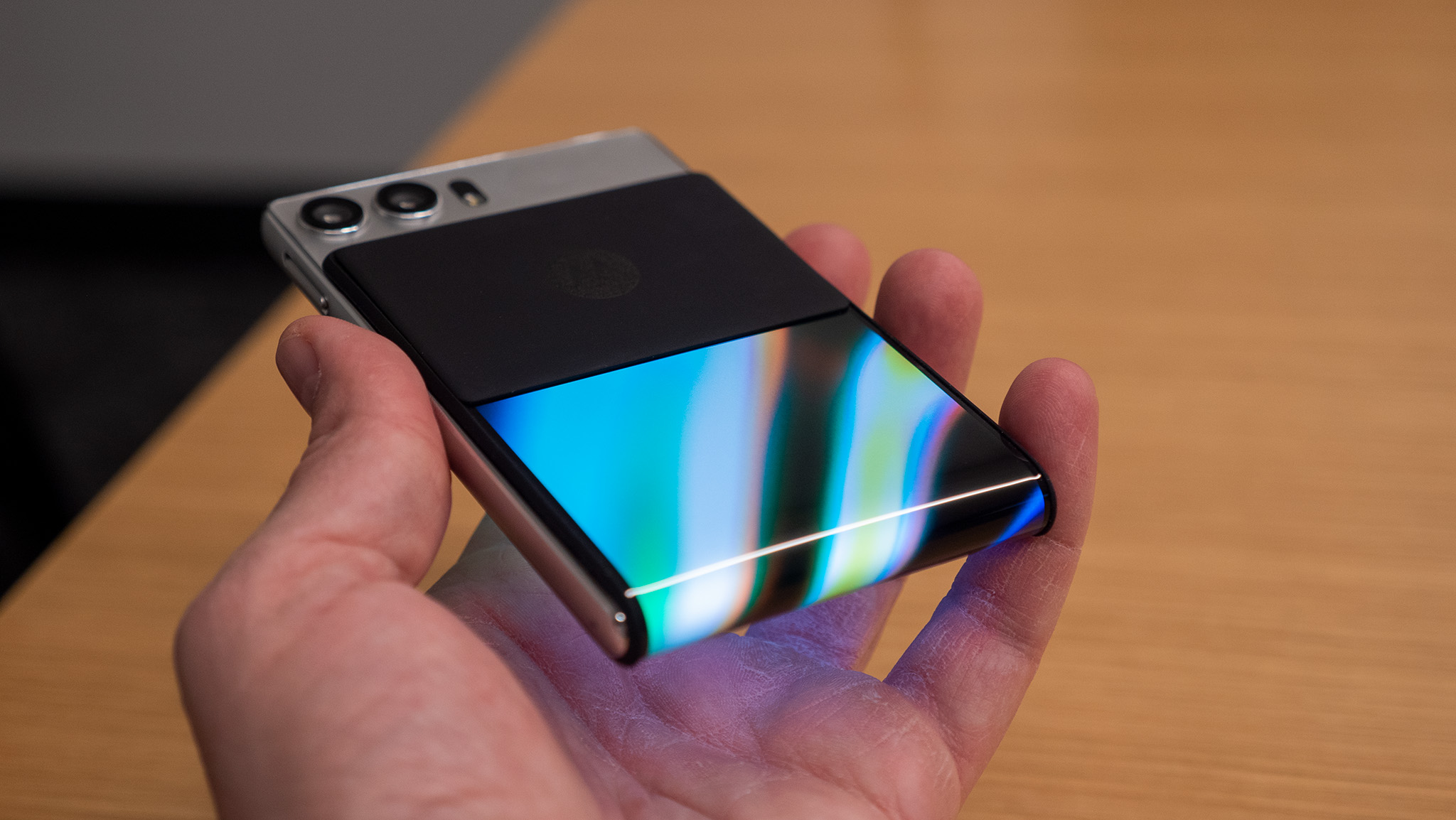
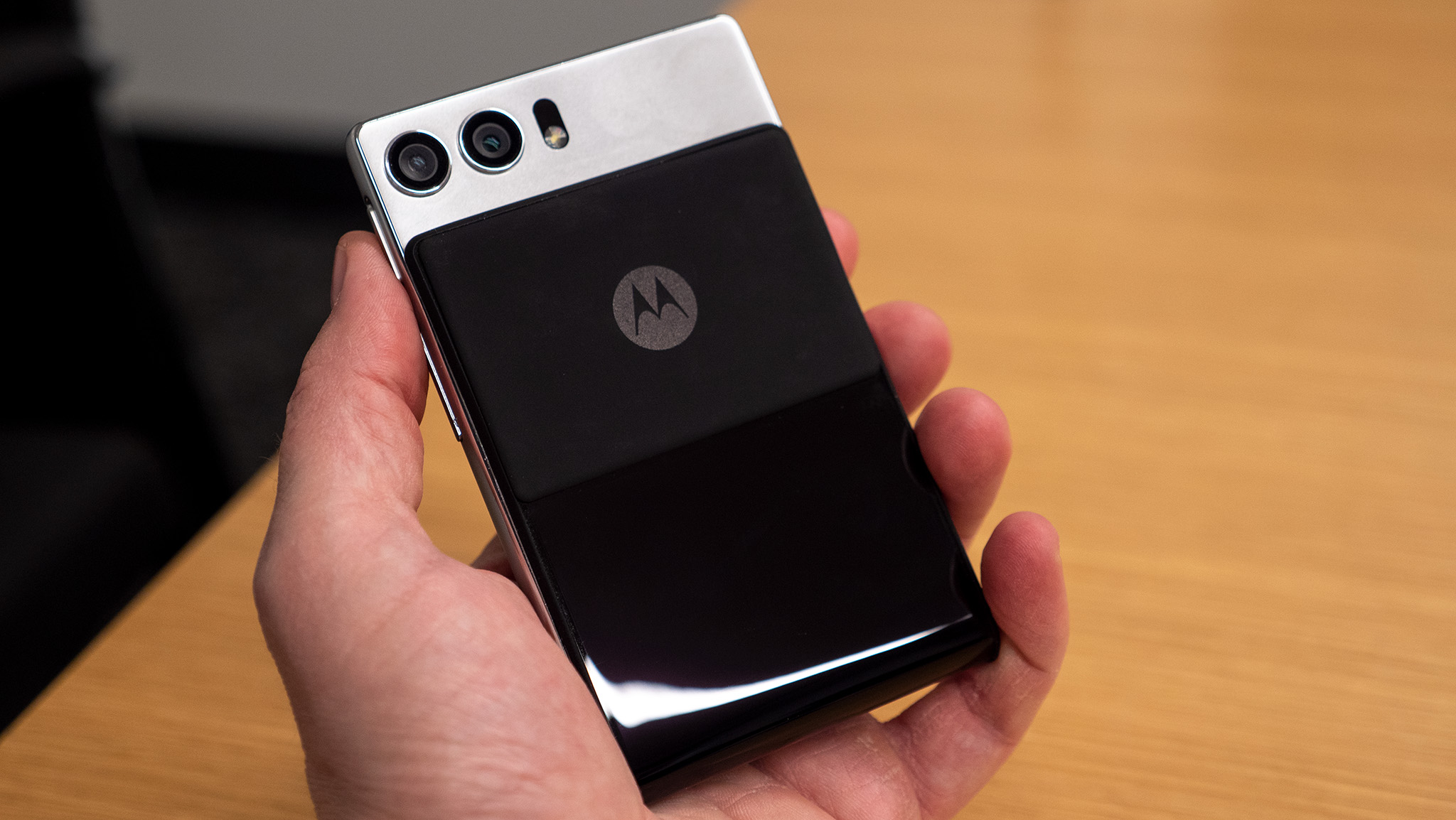
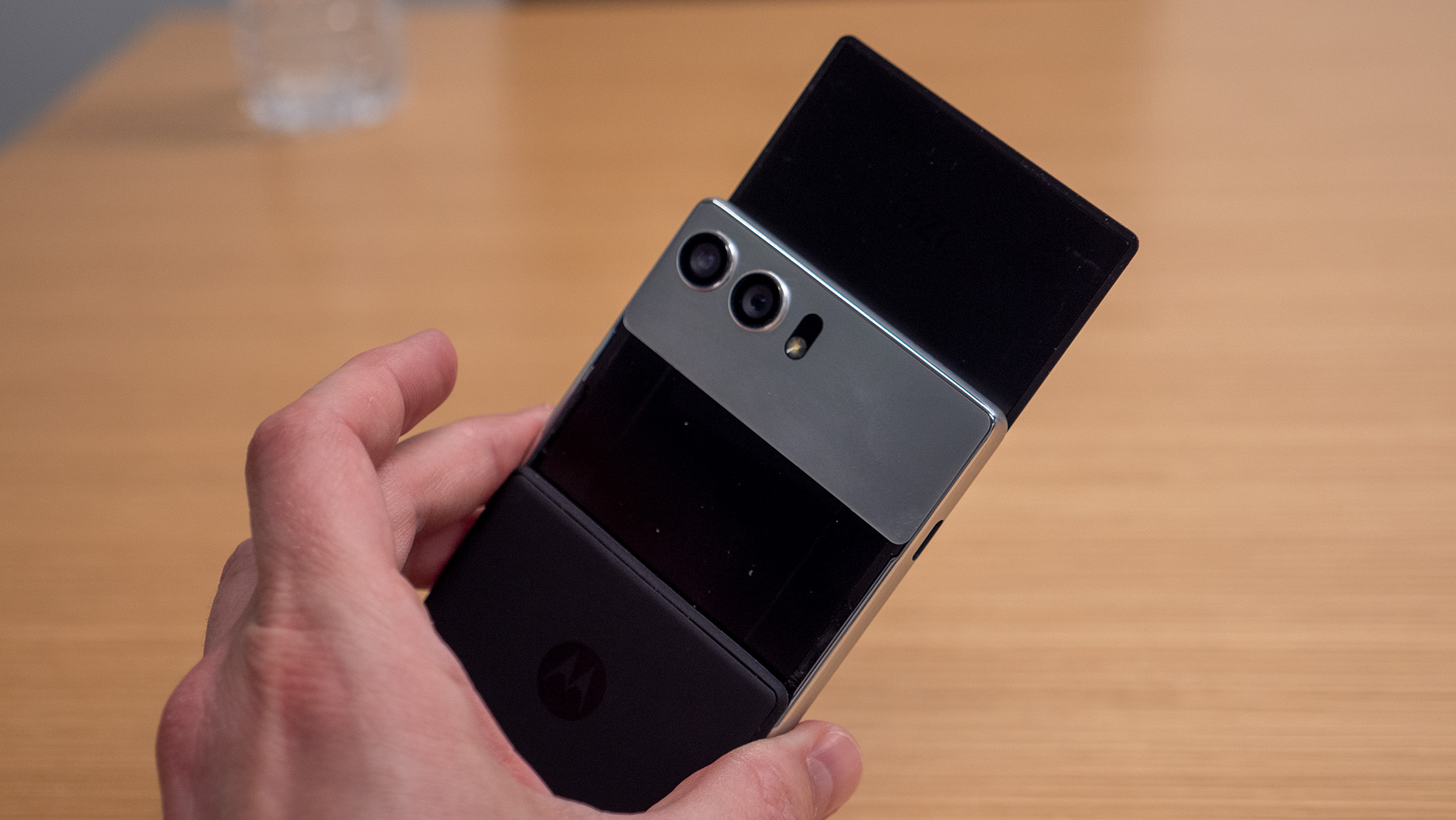
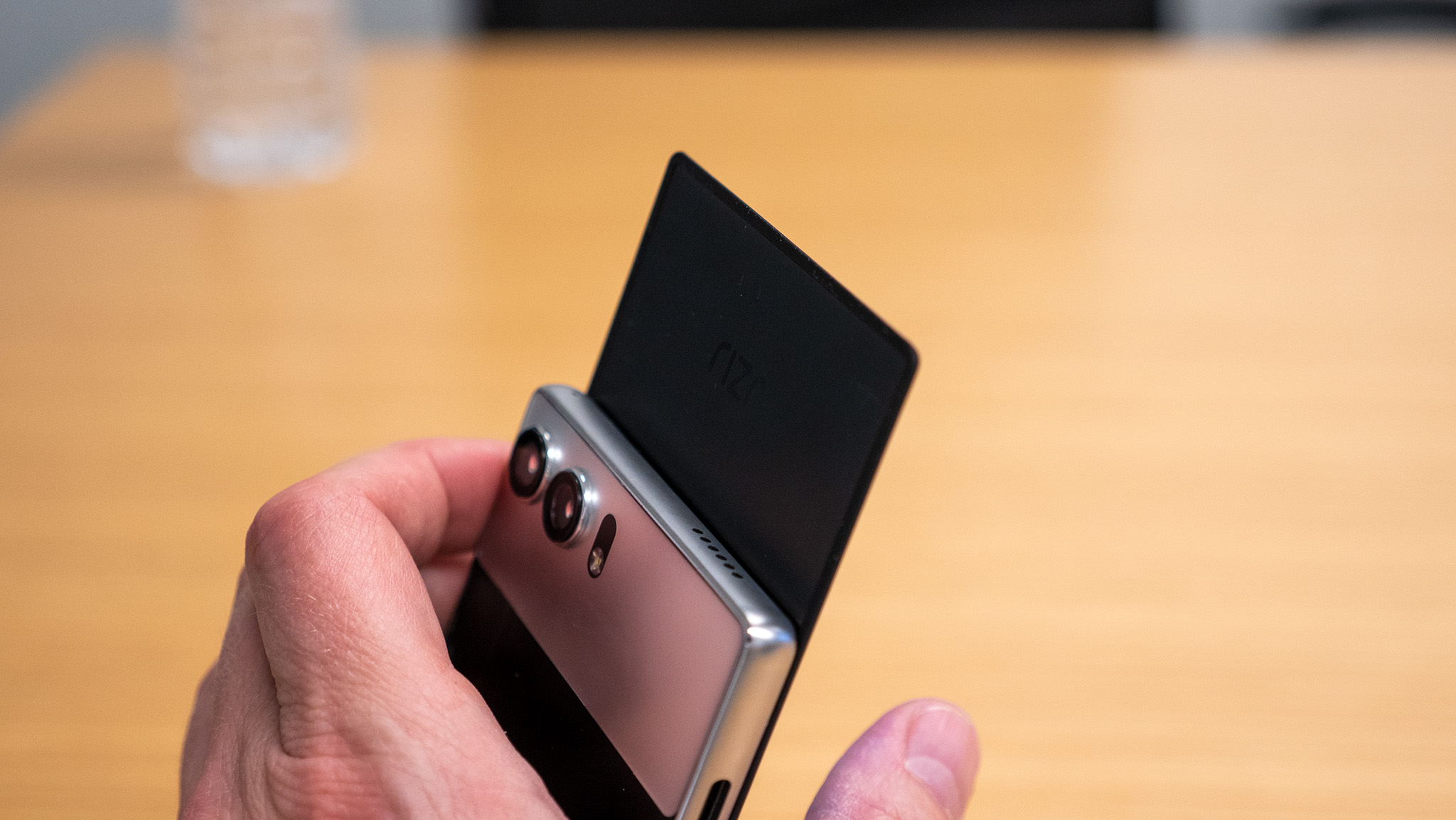
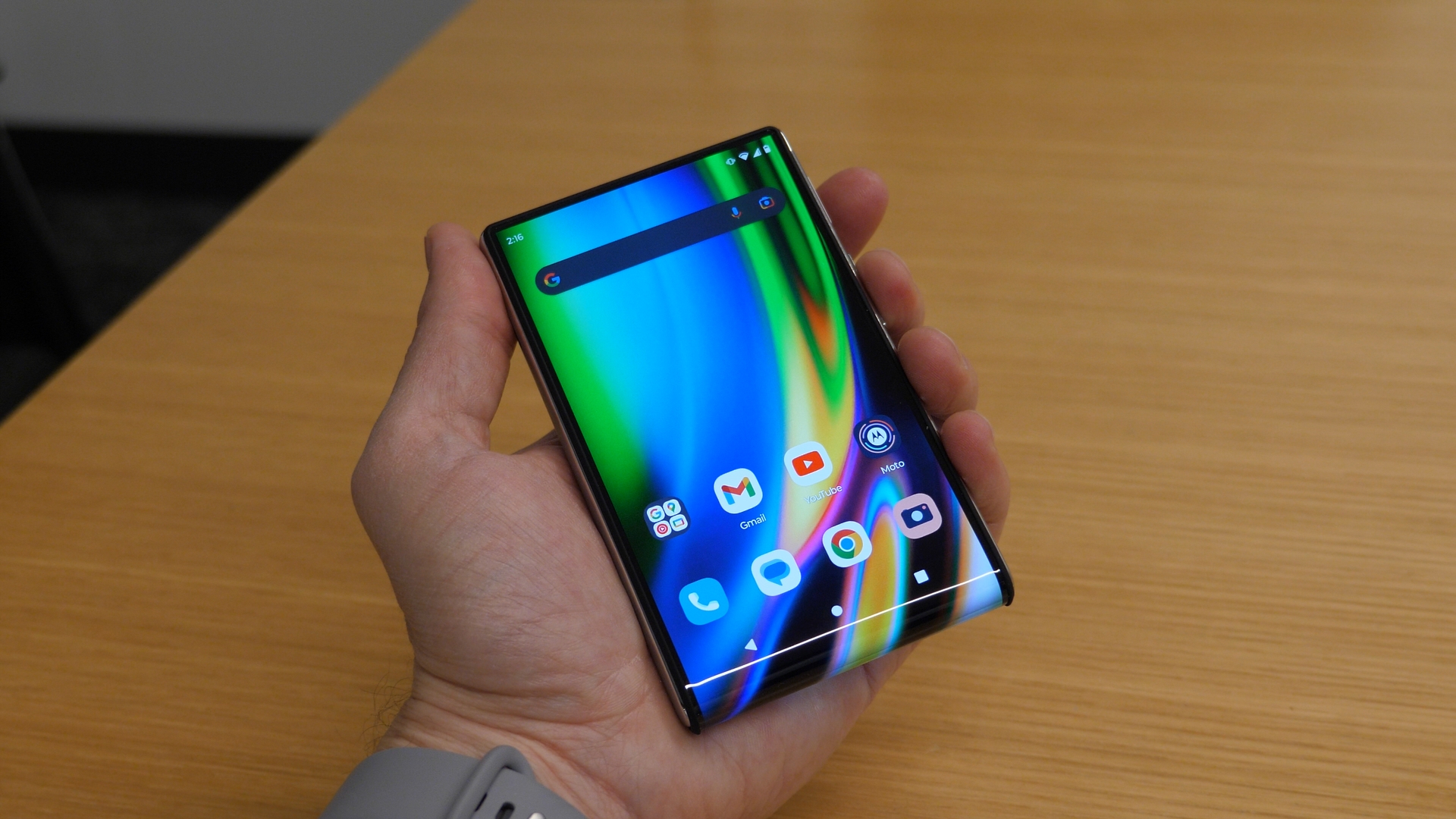
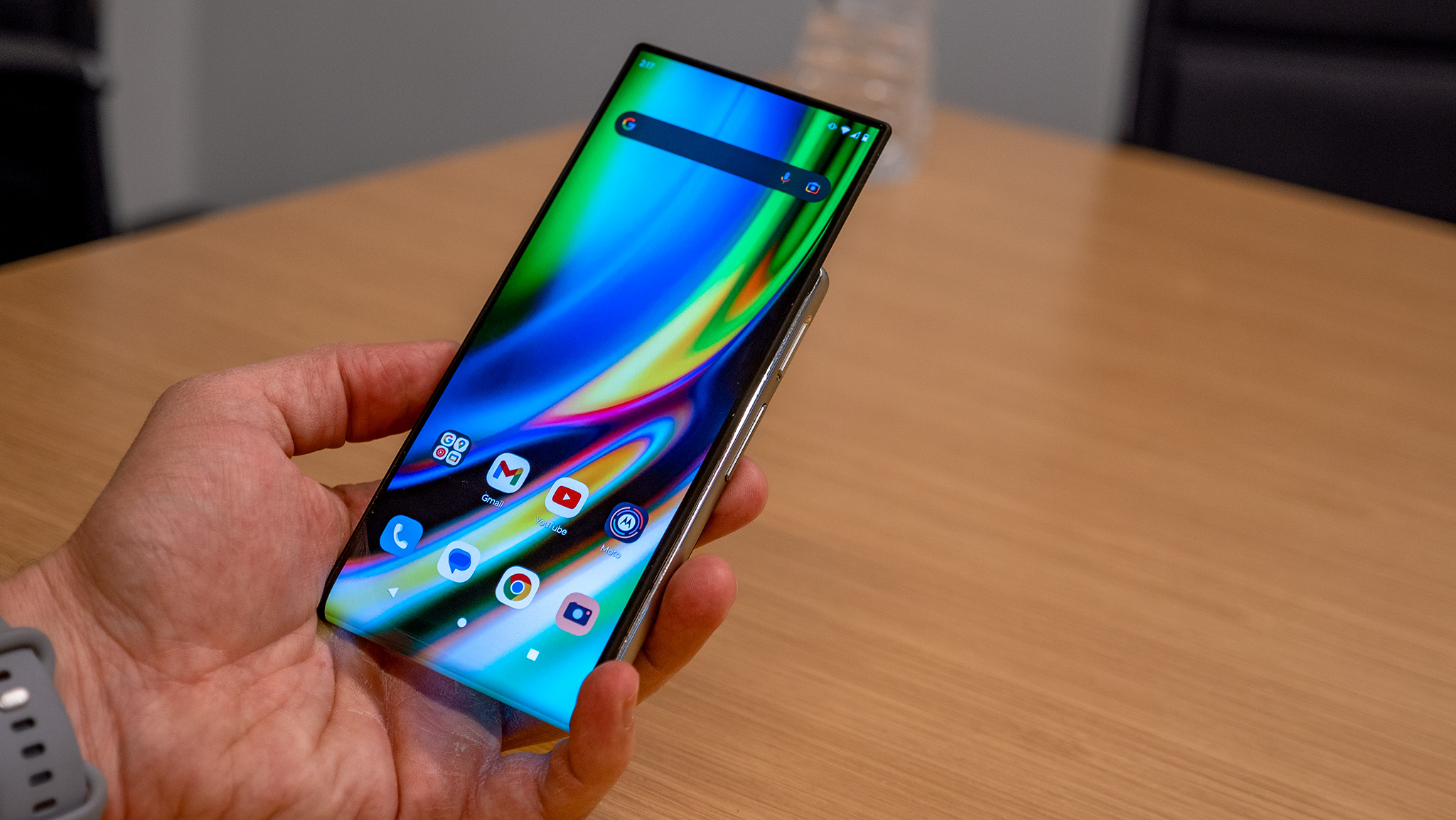
Both the front and back of the display are clad in flexible plastic to allow the display to wrap around the bottom of the phone, keeping it from breaking immediately if dropped and providing a protective layer between your finger and those precious LEDs.
On the back at the end of the display panel is a rectangular motor that pushes or pulls the display along a hidden track. As you might imagine from the cover display concepts on newer flip phones, the back portion of the display can be used for two main things: a camera viewfinder, and an always-on display/notification triage.
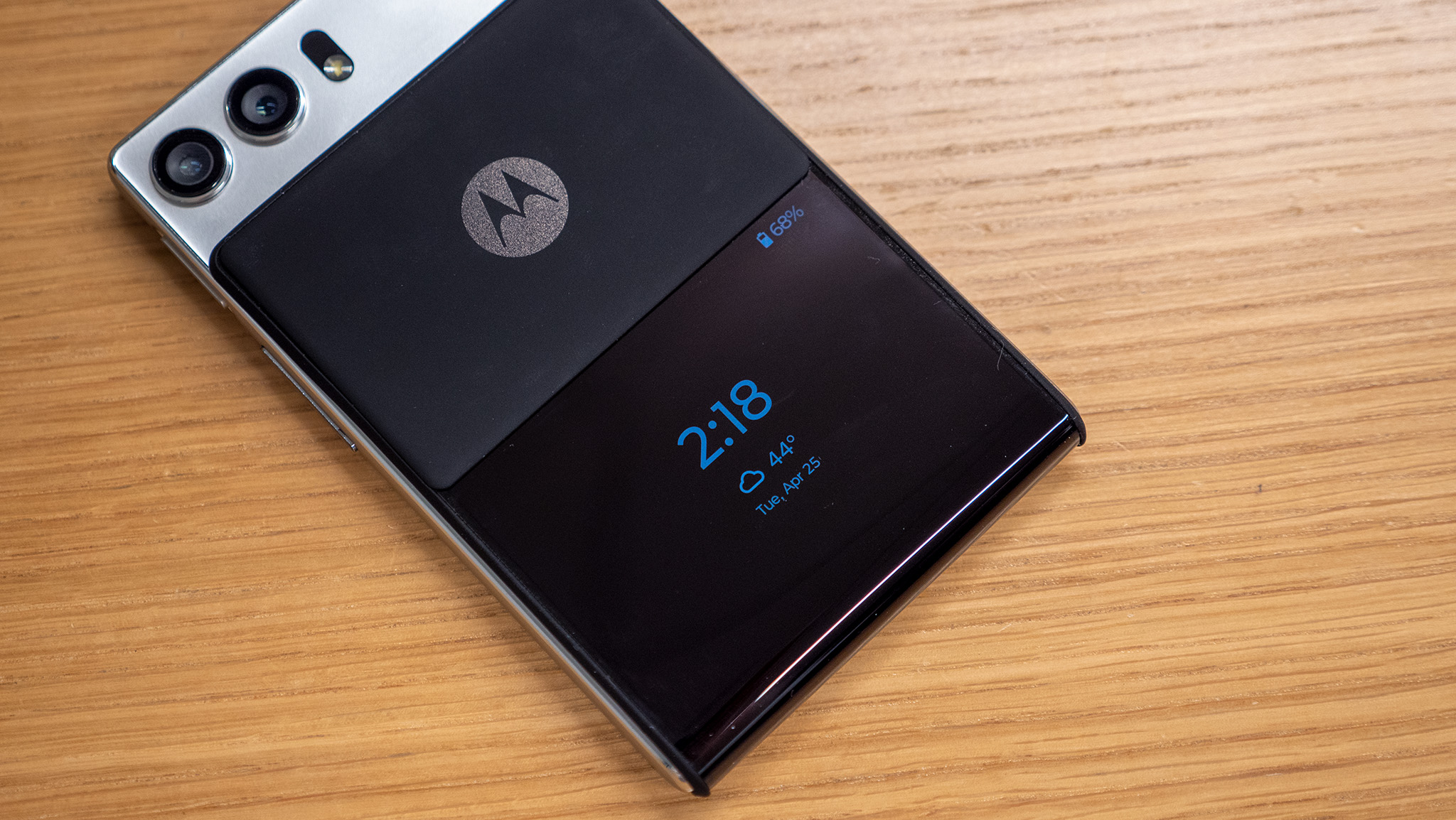
Motorola has begun adding key functionality to ensure the rolling display makes sense including automatic extension and retraction based on app behavior. A Motorola engineer told me that these can be customized in the settings menu, although I imagine several will be included out of the box if and when this phone actually becomes available to consumers.
One such example was that the phone can automatically extend the screen when watching a YouTube video in landscape orientation. All you'll have to do is start a video on YouTube and rotate the phone. The software does everything else for you.
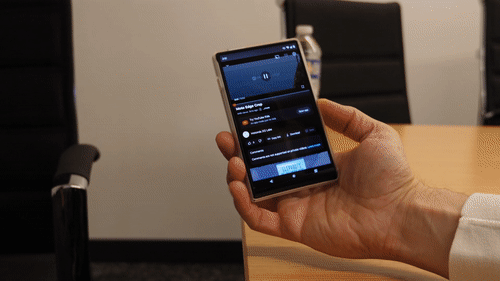
To say this is incredibly cool is an understatement. You can always shrink the display again by double-tapping the power button, which will automatically crop the video as the display shrinks. It's a really cool-looking effect that could be useful for certain types of videos.
And yes, the portion of the display rolled behind the back is off while watching videos, so you won't be seeing part of the video playing on the back of the phone if it's rolled up.
I asked Motorola if we could see the display automatically extend based on the video's aspect ratio. While the question was met with a positive response, it doesn't look like the software is able to do that just yet.
...but, why?
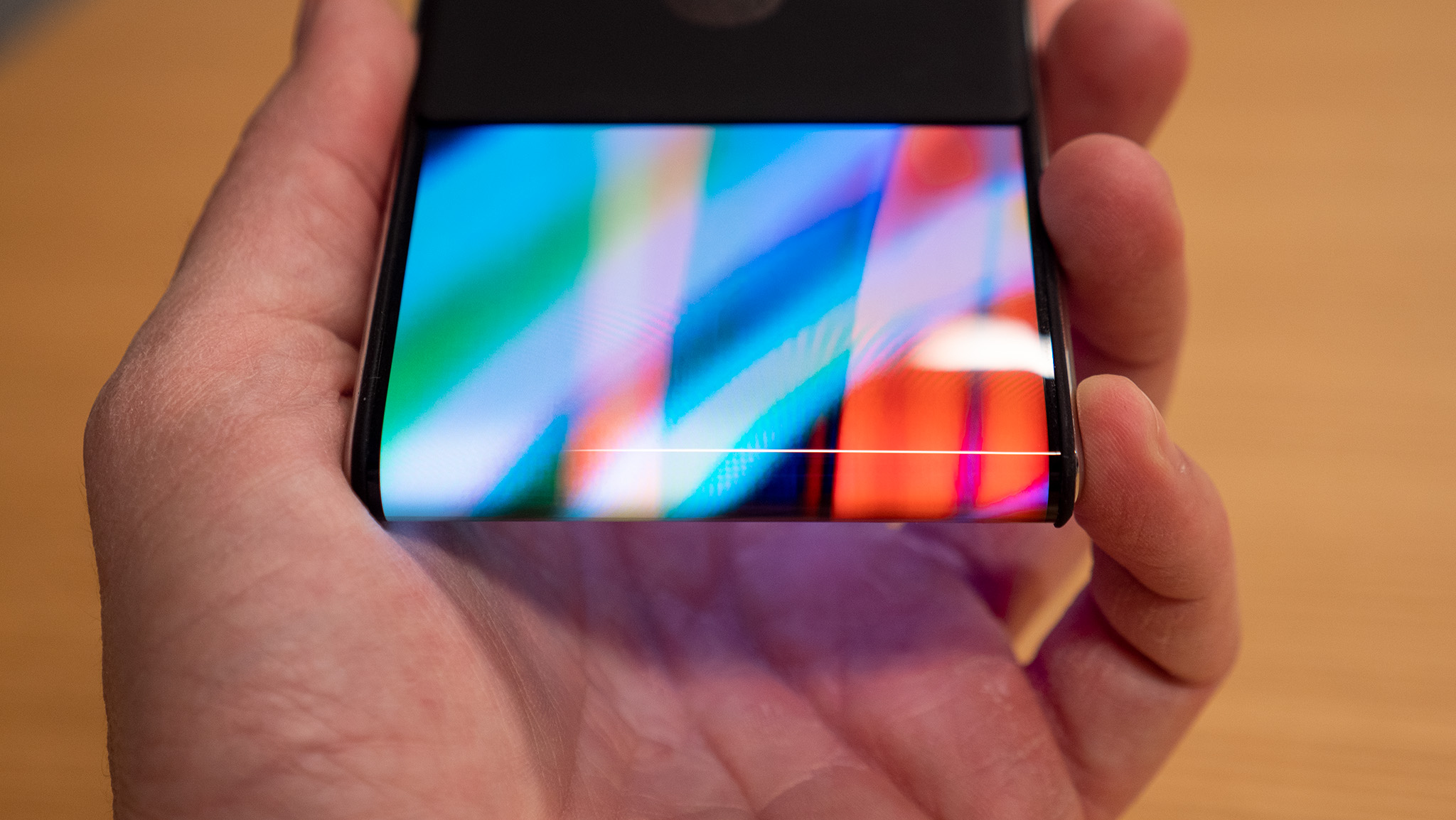
While the Rizr is certainly a head-turner and likely a good conversation starter, the form factor has plenty of advantages over foldable phones. First off, it's not glass, so you won't have to worry about the infamous crack that can sometimes occur when unfolding a folding phone.
It happened to me recently and it's not a fun feeling.
If this could prove to be a more durable concept in terms of product longevity, I could certainly see it replacing a segment of foldable phones for some consumers.
I think the most difficult parts here aren't just the ones you can see — I'm probably as worried about that exposed display curve at the bottom, or the thin extended display as you are — it's also the reduced size of the phone itself that might prove difficult for Motorola to make this into a proper consumer product.
A foldable phone works very well as a dual-purpose product because it doesn't actually change the physical storage space of a standard slab phone. Foldable phones still have as much room inside for chips and batteries as a slab phone; they're just organized differently since the phone has two physical halves.
The Rizr, on the other hand, is physically 2/3rds smaller than any slab phone with an equivalent display size. I think if Motorola can solve that particular point, the rest might write itself.
For now, though, this is certainly a gadget that would look right at home in a Sharper Image catalog.
Phone deals: Best Buy | Walmart | Samsung | Amazon | Verizon | AT&T

